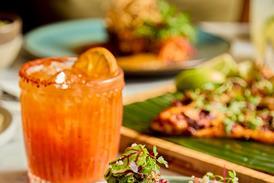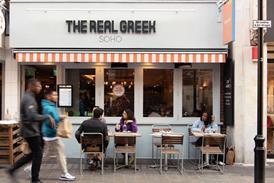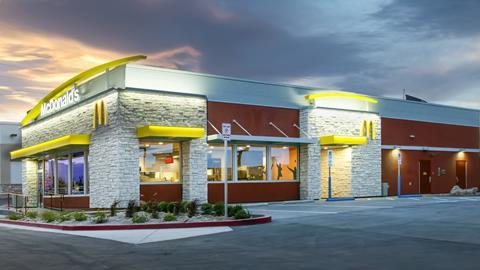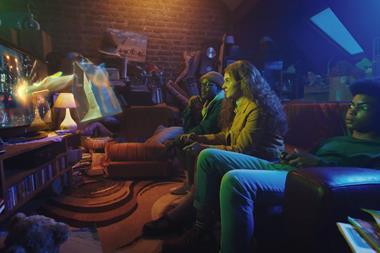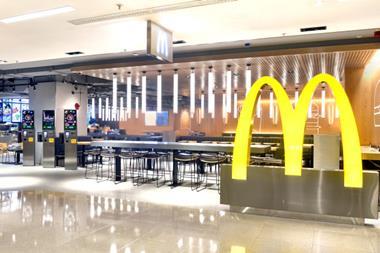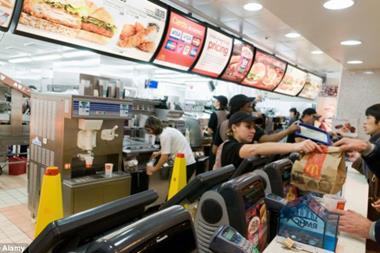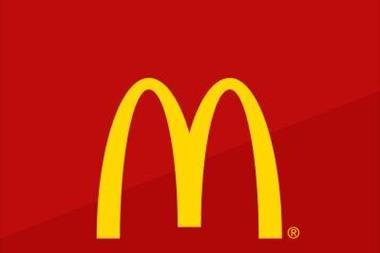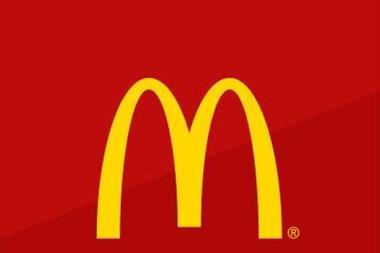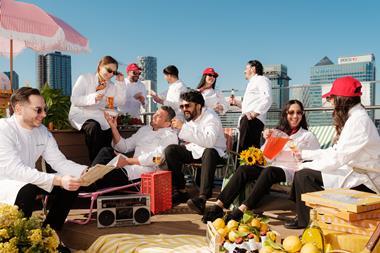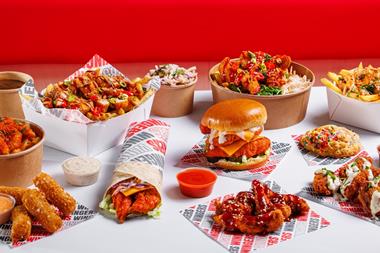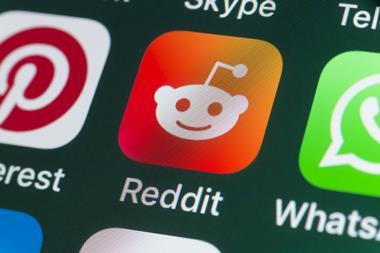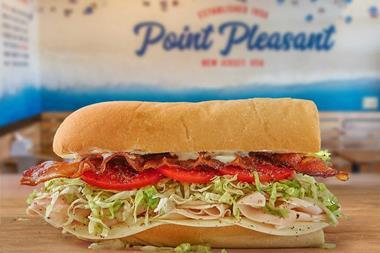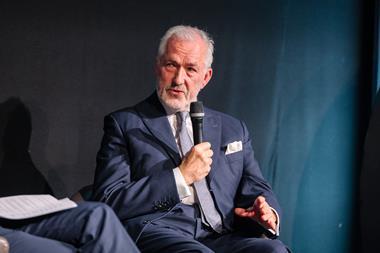McDonald’s released its Q3 results on Tuesday, revealing a 5.9% increase in sales for the three months to 30 September 2019. Total sales for the period were up 1% to $5.43bn, making it the 17th consecutive quarter of growth for the chain.
A 1% nudge isn’t going to generate huge headlines, but it’s another move in the right direction. In a call to investors, McDonald’s president and CEO Steve Easterbrook said across “every country function and level we’re seeing improving discipline and robust levels of execution that are guided by our velocity growth plan.
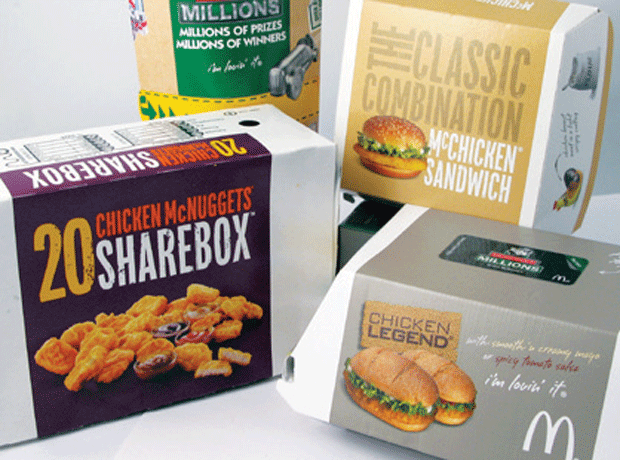
“Every quarter, I spend several weeks visiting restaurants and speak with franchisees and market leaders around the world. I come away from these visits inspired by how our actions resonate with customers, never more so than today when our global economy presents many economic, social and political challenges and uncertainties.”
Doesn’t it just. And those challenges, especially those around political uncertainty, are particularly apparent in the UK thanks to Brexit and its ongoing negative effect on doing business in the usual way.
More acutely for the eating and drinking out sector, that uncertainty has filtered down into a slowdown in consumer confidence and spending, compounding the existing oversupply in casual dining. But McDonald’s, which retains a high value proposition, is holding up well.
On the same call, McDonald’s CFO Kevin Ozan told investors that the UK, which delivered its 54th consecutive quarter of sales growth, “continues to gain market share across nearly all day parts despite an increasingly competitive marketplace, and declining consumer confidence.
The market’s performance was highlighted by a promotional food event, featuring double Quarter Pounder burgers and spicy McNuggets along with growth in delivery, driving record high monthly sales and guest count volumes in the quarter.”
Food is, naturally, core to the success or failure of McDonald’s and it’s been innovating hard with the latest series of limited edition ‘guest’ burgers making an appearance on the menu. In some respects it’s nothing new. It’s done cameos for decades, from the McPizza (which was pretty good) to the McRib (will it ever return to the UK?) and the Big Mac with bacon (not a Big Mac), but recently it’s taken NPD to a new level.
Previously its guest burgers were pretty much a different saucy spin on a bacon cheeseburger, but more recent examples include the Indian Chicken Stack (crispy chicken and onion relish sandwiched between two garlic naan breads) and the Jamaican Chicken burger with jerk sauce. It’s also introduced a cheese bites sharebox (where the flavours will change every six weeks).
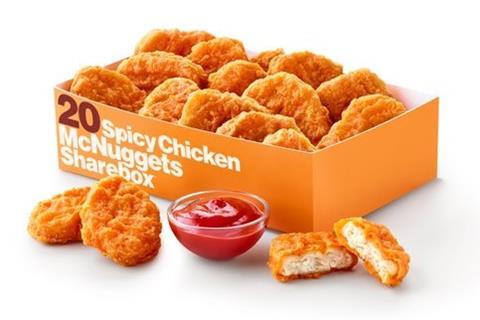
It may be pushing it to describe a double quarter pounder with cheese as innovative, but more interesting was the introduction of spicy McNuggets, a long overdue variant on the McNuggets it first trialled in 1981 and introduced worldwide in 1983.
It’s hard to say without seeing the numbers, but the Spicy McNuggets definitely drove more curiosity than the bigger cheeseburger, certainly on social media (verdict: not spicy enough unless you dipped them in the spicy sauce).
But it wasn’t just the food that made McDonald’s interesting in Q3. The ‘To Go’ format it introduced in London’s Fleet Street in July was an eye-catcher.
Visited here by MCA’s market insights director Steve Gotham, the new format has delivered “encouraging” results, said Easterbrook, despite a higher price point for the food, from a limited menu, in a less customer friendly environment.
It’s a puzzler, given that normally in retail a stripped down proposition results in the product price point moving down, not up. Then again, an extra 10p may be a fair trade off for customers more concerned with speed and convenience, especially in food to go.
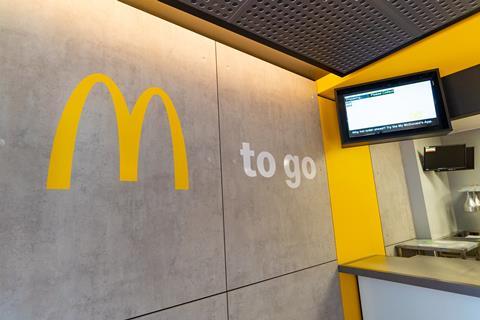
When Easterbrook describes the results as “encouraging” it’s another moment when clarity over the numbers would allow for a stronger conclusion as to the chances of the ‘To Go’ format expanding in the UK and elsewhere, and the format does seem well suited to busy urban locations and transport hubs.
Unfortunately, McDonald’s doesn’t split out its UK results, preferring to deploy a generic ‘growth’ to describe the numbers rather than specific figures, meaning when it comes to identifying exactly how the UK is performing the situation is as transparent as ketchup.
However, when it comes to the third standout strategy for the UK, there are some startling figures available.
McDelivery, which operates exclusively in conjunction with UberEats in the UK, has continued to expand across the country. Last October it was available from 700 restaurants, now that figure is up to 950, which represents 75% of McDonald’s UK 1270-strong estate.
McDelivery now makes up 10% of total UK sales, and, anecdotally, MCA understands turnover in some UK high street stores has doubled as a result.
How much of those sales are incremental and how many replaced visits to a restaurant is impossible to know, but it’s likely that even if a proportion did replace a trip to the restaurant, a proportion will be incremental sales. Plus McDonald’s has also previously said the average McDelivery order is around twice the size of a typical in-store order.
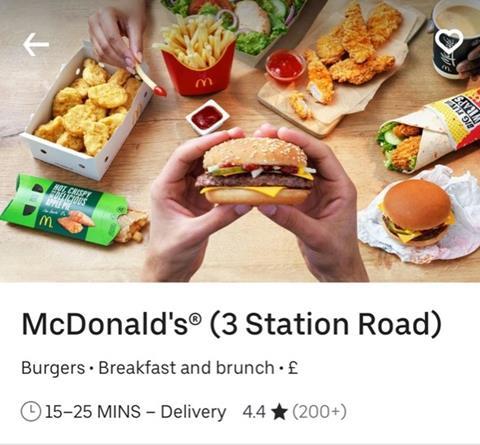
So on the surface it’s working out well for McDonald’s and Uber Eats, which charges customers £3.50 to deliver a McDonald’s in the UK (that charge remains the same however large the order). It also takes a cut from McDonald’s. The specifics of the rate are under wraps but three anonymous US franchisees told Crain’s Chicago Business it’s 20%.
In the US, where around 93% of McDonald’s stores are franchisee owned, the franchisees aren’t happy given on top of that 20%, McDonald’s also takes a cut of their sales, said to be 5%.
Many say this has put too much pressure on their margins, and if online orders do start to overtly cannibalise restaurant sales that pressure will become unsustainable.
So in one sense the rapid growth of delivery has put Easterbrook on a collision course with his franchisees, but Easterbrook is firmly committed to McDelivery and it’s easy to see why. Globally the statistics are even more interesting.
Easterbrook told investors that on average around the world, hungry homebodies are placing 10 McDelivery orders every second. That’s around 30 orders in the time it took you to read that sentence.
It’s interesting to see Easterbrook reveal these statistics. By doing so he emphasises just how important McDonald’s is to Uber Eats, perhaps in order to pressurise Uber Eats to lower its rates, which would obviously make for a better deal for McDonald’s but also ease the existing tension among its franchisees.
Easterbrook has also very publicly alerted Uber Eat’s rivals Deliveroo and Just Eat to exactly how much business McDonald’s is doing in the UK through delivery to further crank up the pressure on Uber Eats. And in the US, McDonald’s has ended the exclusive deal with Uber Eats by teaming up with Doordash.
Easterbrook has also previously been vocal about the link between consumer awareness and online order rates – in other words, not enough people know that McDonald’s delivers but when they do, they order it. With that in mind, restricting itself to one UK platform, particularly when Deliveroo and Just Eat are currently marketing themselves so aggressively above the line, doesn’t follow.
Away from delivery, but still in terms of technology, there is a lot more to come, said Easterbrook, thanks to the digital drive thru menus, its smartphone app, and the self-ordering kiosks it began introducing in the US in 2015 and which arrived in the UK in 2018. Superficially they represent a speedier way to serve customers, but they also provide an effective way for McDonald’s to upsell by getting increasingly personal with customers.
“Dynamic yield technology is now in over 9,500 U.S. drive thrus with a full rollout to nearly every US restaurant with an outdoor digital menu board expected by year-end,” he said. “And we’re just getting started.
“Deployment across our existing drive thru restaurants in Australia will be complete by year-end. And we’re scoping future deployment for additional markets and applications, eventually including kiosks and our global mobile app. Ultimately, dynamic yield will facilitate a range of personalization benefits, where we can leverage knowledge of the customer and order patterns to provide a tailored experience in restaurants, at the drive thru and on our app.
“The beauty is there is nothing that customer has to adjust to, they almost don’t know that this experience is happening for them as we’ve got dynamic digital menu boards. Effectively as they start to place their order, the menu boards respond and are more likely to suggest items a customer will want, and less likely to show items that customers are less likely to want.
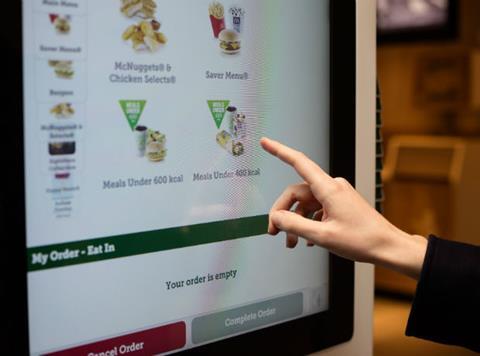
“And of course, machine learning helps you improve that. And particularly given the transaction levels we have across our business we can learn very quickly.
”But there’s further capabilities as we’re learning, so, for example, there’s an area now where they can offer trending, which will actually pick up items either in a restaurant or a local group of restaurants that are proven to be particularly popular at that point in time. So there’s another level of dynamic interaction going there.
“And again, at this point, we’re only really talking about having it on the outdoor digital menu boards. But, suffice to say, part of the investment we’re making in the business is to look how can we integrate that into the cell phone or kiosk and perhaps ultimately the global mobile app as well.
“So I think we’re at early stages and already very encouraged about the results we’re seeing. The speed with which we can execute and roll this out is really giving us a lot of confidence that we can get this across. I guess we’ve now got an outdoor digital menu boards in over 10,000 restaurants in the US. And the majority of our full length international lead markets are pretty much fully deployed as well.”
Easterbrook singled out the UK as one market that has a “little bit of cash” to push this technology further. And it will, when it’s such an obvious way to sell more food.
However, at the moment it plans to resist the lure of one of the more contentious possibilities, dynamic pricing, with Easterbrook saying the business currently plans to “avoid” it. Although he said the business had discussed it, and he knew others in the market were also talking about the potential for it, McDonald’s had concluded it was “not the way we want to do business” and that “I think part of the brand promise we have with customers is that reliability in knowing what their typical meal or combination costs.”
In short, McDonald’s continues to skilfully navigate this challenging landscape, globally and in the UK, by focusing on future tech solutions to drive sales, diversifying into new fascias to suit time-poor customers, and shaking up its menu by introducing bold new flavours or simply slapping another burger on top of another one, plus extra cheese. Some of it is futuristic, some of it is simplistic. Much of it is working.
Precis
ANALYSIS
McDonald’s released its Q3 results on Tuesday, revealing a 5.9% increase in sales for the three months to 30 September 2019. Total sales for the period were up 1% to $5.43bn, making it the 17th consecutive quarter of growth for the chain. A 1% nudge isn’t going to generate huge headlines, but it’s another move in the right direction. In a call to investors, McDonald’s president and CEO Steve Easterbrook said across “every country function and level we’re seeing improving discipline and robust levels of execution that are guided by our velocity growth plan.














